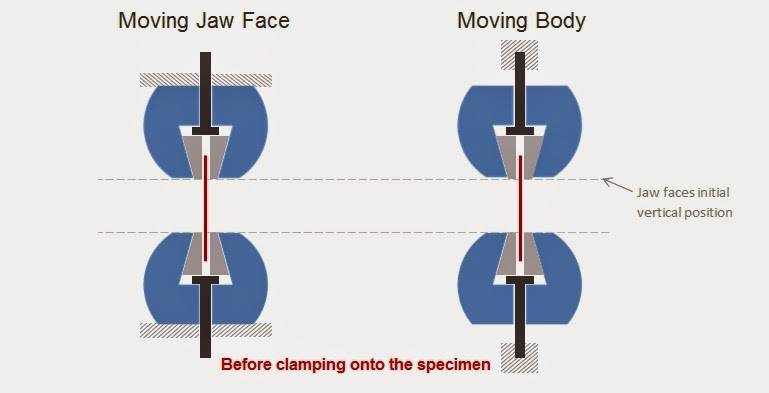For “moving jaw face” wedge grips, the jaw faces move to clamp the specimen while the grip body remains stationary. As the upper jaw faces move down and the lower jaw faces move up to grip the specimen, a compressive preload is introduced into the specimen. This may cause the specimen to be damaged or buckle even before starting a test. Many modern testing machines can alleviate this problem by automatically moving the crosshead to relieve the specimen of the compressive preload. However, when using this feature, it is important to note that how much the crosshead will move is dependent on the specimen stiffness.
On the other hand, for a wedge grip that incorporates the “moving grip body” design, the grip body moves vertically to close the jaw faces. The jaw faces do not move vertically during the opening or closing of the grip. This design feature helps to minimize any axial compressive preload applied to the specimen during clamping*. The other advantage of having the jaw faces remain vertically stationary is that it is possible for a user to preset the exact vertical position and grip separation at which the specimen will be held when clamped. For these reasons, the “moving grip body” design is widely regarded as preferable to the “moving jaw faces” design.
* Even with a “moving grip body” design, there may still be some small preload on the specimen but this would be purely due to the interaction of the jaw face teeth with the specimen and is much smaller than the compressive preload caused by a wedge grip with a “moving jaw faces” design.

